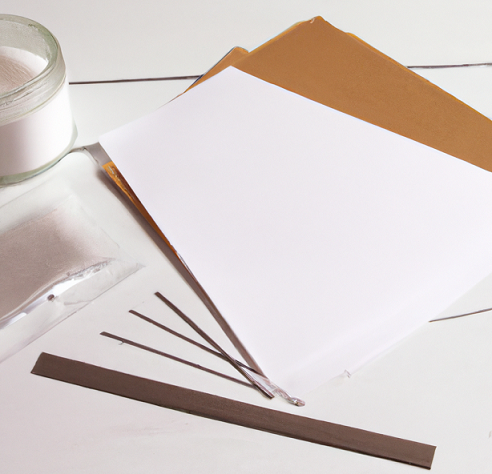Paper has been widely used for various purposes such as writing, printing, packaging, etc. However, its production and disposal lead to deforestation, greenhouse gas emissions, and waste generation. The growing concern for the environment and the need for sustainable practices have led to the search for alternatives to paper.
Alternative Materials
Electronic paper: Electronic paper is a thin, flexible display technology that emulates the appearance of ink on paper. It is durable and energy-efficient, making it a viable alternative to paper.
Biodegradable materials: Biodegradable materials are made from organic compounds that can be broken down by natural processes. They can be used as alternatives to paper products such as bags, cups, and containers.
Recyclable materials: Recyclable materials can be used multiple times without losing their properties. They can replace paper in various applications such as packaging, printing, and stationery.
Eco-friendly materials: Eco-friendly materials are materials that do not cause harm to the environment. They can replace paper products and help reduce waste and emissions.
Techniques
Digitalization: Digitizing information and data can significantly reduce paper usage. This can be done through the use of computers, smartphones, and other electronic devices.
3D Printing: 3D printing is a technology that allows for the creation of three-dimensional objects using a digital model. It can reduce the need for paper prototypes and product samples.
Augmented Reality: Augmented reality is a technology that blends digital information with the physical world. It can be used as an alternative to paper manuals and brochures.
Virtual Reality: Virtual reality is a technology that creates a simulated environment. It can be used as an alternative to paper-based training and education materials.
Advantages:
Sustainability: The use of alternative materials and techniques can lead to a more sustainable future by reducing waste, emissions, and deforestation.
Cost-effectiveness: Alternative materials and techniques can often be more cost-effective in the long run, as they reduce the costs associated with paper production, disposal, and storage.
Improved functionality: Alternative materials and techniques can provide improved functionality compared to traditional paper-based products, such as greater durability, flexibility, and interactivity.
Increased efficiency: Alternative materials and techniques can improve efficiency by reducing waste, streamlining processes, and increasing productivity.
Challenges and Solutions
Technical challenges: The implementation of alternative materials and techniques may involve technical challenges such as compatibility with existing systems and infrastructure.
Cost challenges: The initial cost of implementing alternative materials and techniques may be high, and this may present a challenge to widespread adoption.
Adoption challenges: Adopting alternative materials and techniques may require changes in behavior and habits, and this may present a challenge to widespread adoption.
Solutions for implementation: To overcome the challenges, a combination of government policies, private sector initiatives, and consumer education can be used to facilitate the implementation of alternative materials and techniques.
The future of alternative materials and techniques looks promising, and the widespread adoption of these solutions will play a crucial role in creating a more sustainable future. While there may be challenges in the implementation of alternative materials and techniques, the benefits they provide make it a worthwhile effort. The transition from paper to alternative materials and techniques requires a collective effort from all stakeholders, including governments, businesses, and individuals.


